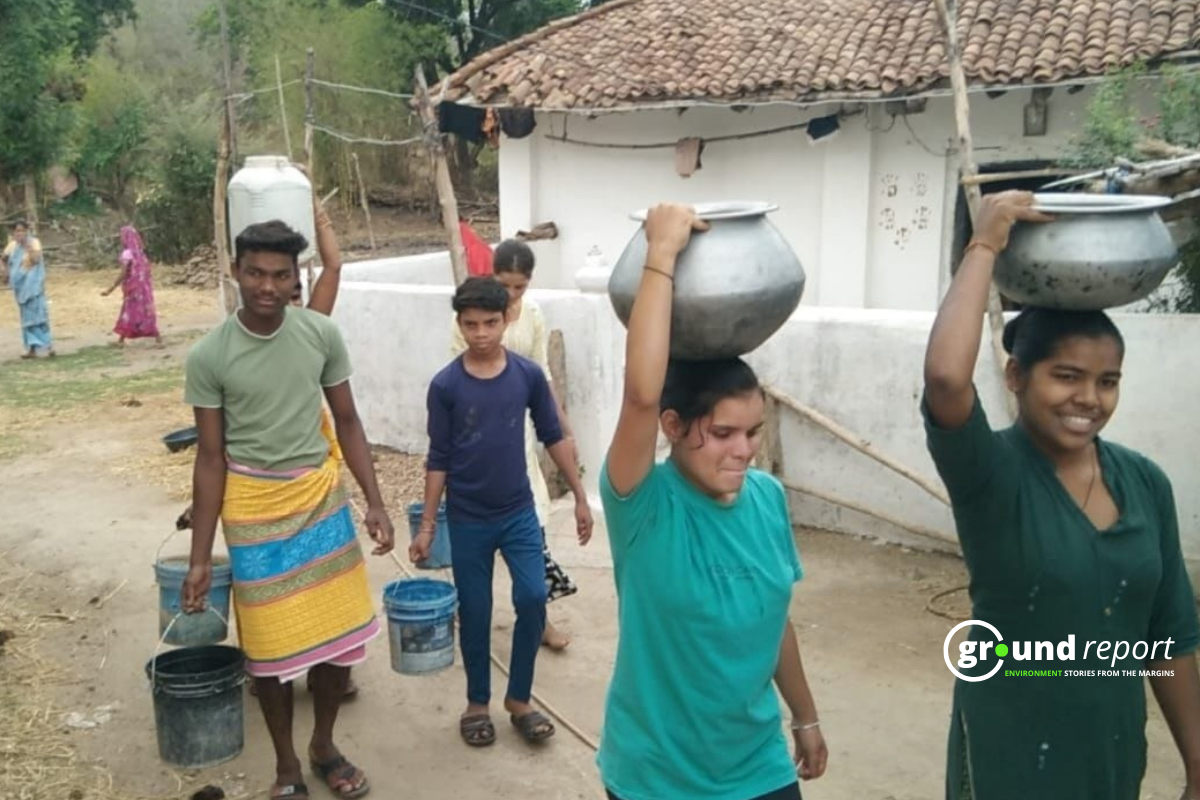On Sunday, November 12, a tunnel that was being built on the Yamunotri National Highway in Uttarkashi, Uttarakhand, fell apart. This trapped 40 workers inside. Right now, the Uttarakhand government is trying hard to get these workers out safely.
We still don’t know why a section of the tunnel collapsed, approximately 200 to 300 meters from its start. However, Manoj Garnaik, a former project director at a construction company named L&T with extensive knowledge on underground construction, holds some theories.
The report of Indian Express indicates that Garnayak suggests a loose patch of rock, possibly consisting of fractured or fragile rock, might have triggered the collapse. This may not have been visible during construction. Garnayak also suggests that another potential cause could be the erosion of loose rock particles over time due to water seepage through a loose patch. This could create an unseen void at the top of the tunnel.
Typically, people use one of two methods to excavate tunnels: the drill and blast method (DBM), or tunnel-boring machines (TBMs). Even though TBMs offer more safety, they carry a higher cost and are unsuitable for drilling through very tall mountains due to the risk of rock bursts. In India, they import TBMs, each cost up to Rs 200 crore.
The choice of excavation method depends on the type of terrain. For instance, when the rock cover is up to 400 metres tall, TBMs are ideal, while people usually use DBM in places like the Himalayas, including Jammu & Kashmir and Uttarakhand.
In India, engineers dig a borehole into the rock to extract a core sample. They then send it for petrographic analysis. These investigations assist in determining if the rock can bear the load of the overburden when they create a tunnel.
Risks in tunnel construction in Fragile Uttarakhand
A former geologist from the Wadia Institute of Himalayan Geology, Sushil Kumar, has raised concerns about the safety measures and precautions taken during the construction of tunnels in the ecologically fragile state of Uttarakhand. This comes in the wake of a recent incident where a part of an under-construction tunnel on the Yamunotri National Highway collapsed, trapping 40 workers inside.
Kumar suggests that the collapse could have been due to a loose patch of rock, which may not have been visible during construction. He also points out that soft rock composes the Himalayan region of Uttarakhand, which requires special attention during development works in hilly areas.
He further emphasizes the importance of considering the pass block during tunnel construction, especially in the context of Uttarakhand. This is crucial for ensuring the immediate and safe evacuation of workers in case of any incident.
Kumar also highlights the need for agencies to be mindful of certain spots that are dependent on some support while constructing tunnels in mountainous areas with soft rock formations. Removing such spots can cause the earth to cave in and block the tunnel, as happened with the Uttarkashi tunnel.
Key aspect of building a tunnel
Several crucial aspects are involved in constructing a tunnel. First and foremost, it is vital to understand the ground and sub-ground conditions. This encompasses identifying the type of soil and rock in the area where the construction of the tunnel will take place, as well as locating any weak beds or zones, including faults and shear zones.
The pattern and pressure of groundwater in the area can significantly impact the construction and stability of the tunnel, making groundwater conditions another key factor.
A thorough geotechnical investigation is essential for the rock through which they propose to make a tunnel. They can achieve this by sending seismic refraction waves through the rock to check which patches are fragile or solid.
The method of tunnel construction depends on factors such as ground conditions, groundwater conditions, the length and diameter of the tunnel drive, the depth of the tunnel, and the logistics of supporting the tunnel excavation.
Finally, the design of the tunnel should take into account the stress levels at every step of construction, the final use of the tunnel, and safety considerations. All these factors together contribute to the successful and safe construction of a tunnel.
Experts critique Char Dham Highway Project
M.L. Sharma, a professor at the Indian Institute of Technology, Roorkee revealed that during a previous investigation into a similar incident in the Himalayan region, he discovered a previously undetected cavity measuring 250m by 250m. “Cavities can weaken the area and raise the risk of a collapse,” he explained.
Meanwhile, the Uttarakhand government has commissioned a technical expert panel to investigate the collapse. However, experts outside the panel and citizens campaigning for responsible development in the Himalayas have raised concerns about the Char Dham highway widening project, of which the tunnel is a part. They argue that the project has involved unscientific construction and increased the risk of landslides and related disasters.
A high-powered committee (HPC) appointed by the Supreme Court to study the project and recommend steps to minimise its environmental and other impacts had observed in its July 2020 report that the project activities had “mercilessly destroyed forest, rivers, streams, land, soil and wildlife”.
The HPC also noted that the 900km project was “misleadingly” broken into 53 smaller projects of less than 100km each “to evade the necessity of environmental impact assessment”, a process mandatory for any project over 100km.
Keep Reading
- Scientists Discover Two New Species Of Seer Fish In Indian Water
- How Bursting Crackers In Kedarnath Can Destroy Ecology Of Area?
- 1 In 3 Children Worldwide Exposed To Severe Water Scarcity
Follow Ground Report for Climate Change and Under-Reported issues in India. Connect with us on Facebook, Twitter, Koo App, Instagram, Whatsapp and YouTube. Write us on GReport2018@gmail.com.






